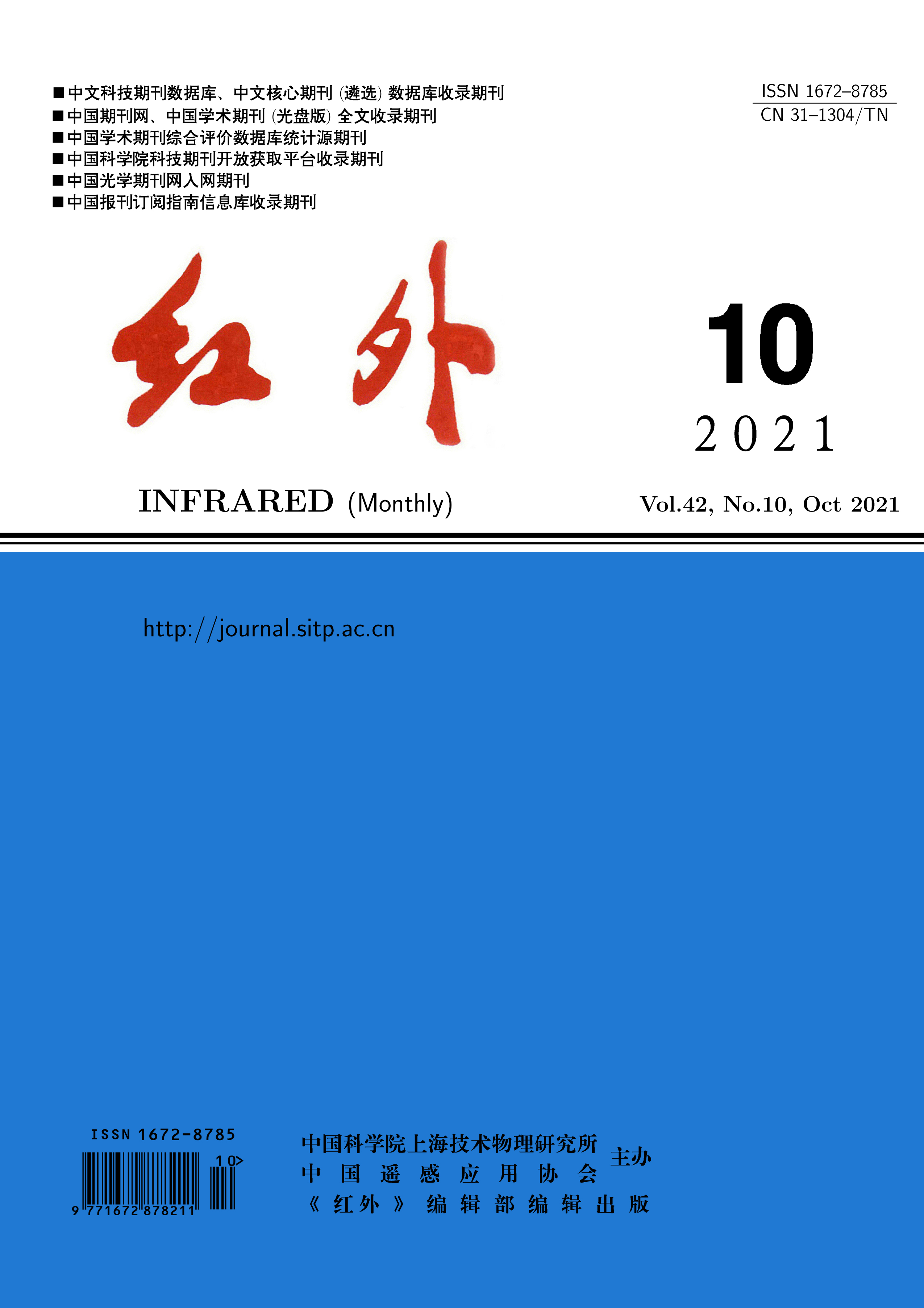
Infrared detection technology has been popularized in many fields. It has received attention from countries all over the world. As one of its core sensitive metamaterials, pyroelectric materials have become a hot spot in dielectric physics and materials research in recent years. As a typical ferroelectric material, sodium bismuth titanate-based ceramics have received extensive attention due to their high depolarization temperature and large pyroelectric coefficient. The research status of sodium bismuth titanate-based pyroelectric ceramics was summarized. The means to enhance pyroelectric effect in different components were summarized, and the properties were compared. It is found that lead-free ceramic materials with high depolarization temperature and high pyroelectric coefficient can be obtained by doping single-component acceptors. Finally, some existing problems are discussed.
The rapid development of infrared detection system has promoted the extensive research on infrared stealth materials. Infrared stealth materials are mainly used to regulate the infrared radiation energy of the target, and the main measures are to control the infrared emissivity of the target surface and the temperature of the target surface, so that the radiation energy of the target and the background environment can be fused, so as to achieve the purpose of stealth. The basic principle of infrared stealth is introduced, and the research status of infrared stealth materials such as low emissivity coating materials, temperature control coating materials and intelligent stealth materials in recent years is summarized. In the end, the future of infrared stealth materials is looked forward to.
The surface defects of HgCdTe p-on-n double-layer heterojunction materials are studied. The surface defects of materials will affect the performance of subsequent devices. Through observing the surface of the epitaxial material with the optical microscope, it is found that the surface irregular blocky defects and surface hole defects are common. By using confocal microscope, scanning electron microscope, energy spectrum analysis and other testing methods, it is found that the defects originate from the depletion of cadmium in the growth process of p-type layer and the extension of defects in the growth process of n-type layer.
Indium antimonide (InSb) is a widely used material in mid-wave infrared detection. The surface roughness of polishing wafer is the key index that affects the performance of devices. The influence of pH value of InSb chemical mechanical polishing solution, the proportion of oxidant and the flow rate of the polishing solution on the surface roughness of InSb polishing wafer were studied. The surface roughness of the polishing wafer was characterized and optimized by atomic force microscope(AFM) and the surface profilometer. The results show that the surface roughness of InSb wafer is 1.05 nm (AFM) when the pH is 8, the proportion of oxidant is 0.75%, and the flow rate of polishing solution is 200 L/min. At the same time, the polishing macro quality of the wafer is better.
With the decreasing of the key size of InSb infrared detector, the influence of the passivation film stress on the I-V performance of the device becomes more and more obvious. In order to reduce the stress of the detector chip, a composite passivation film system consisting of SiO2 and SiON was studied. Passivation films with thicknesses of 300 nm, 500 nm, 700 nm and 900 nm were deposited on InSb wafers by varying the radio frequency (RF) time of the gas. The stresses of passivation films with different thicknesses were measured and calculated. When the thickness is 700 nm, the minimum stress of the passivation film is -1.78 MPa. The I-V characteristics of devices with different stress passivation films are investigated. It is found that the InSb chip has better I-V characteristics when the thickness is 700 nm. By adjusting the thickness of composite passivation film, the stress of passivation film is reduced, and the performance of InSb detector is effectively improved.
A silicon-based zero refractive index grating (ZCG) reflector for 940 nm vertical cavity surface emitting laser is designed by using strict coupled wave theory and time-domain finite difference method. The high reflection characteristics of ZCG are investigated, and the conditions for achieving broadband high reflection are analyzed. In addition, the effect of grating structure parameters on reflection performance is discussed and fabrication tolerances are calculated, and the effect of ZCG size and VCSEL oxide aperture size on mirror loss is simulated. The designed ZCG with a bandwidth of 280 nm, Δλ/λ0=29.8%, can replace the conventional distributed Bragg reflector in VCSELs, reduce the process difficulty and growth cost, and facilitate the integration of VCSELs with other Si-based optoelectronic devices.
During the drilling process, water-based drilling mud can infiltrate the formation through mud cake and contaminate the formation water. In order to obtain pure formation water samples, it is necessary to monitor the pollution level in real time. Before sampling, the fluid is gradually transferred from water-based mud filtrate to pure formation water. The degree of formation water contamination can be calculated in real-time by obtaining the absorbance of filtrate, pure formation water, and mixed fluid. In view of the fact that online monitoring of downhole formation water pollution rate can be regarded as a time series prediction problem, Elman neural network model is adopted to train the absorbance data, so as to predict the absorbance of pure formation water. The validation is performed using offshore well data. Combining the absorbance of the formation water based on the Elman neural network and that of the drilling fluid filtrate collected at the initial pumping stage, the real-time formation water pollution rate can be calculated and compared with the laboratory water analysis results. The results show that they are in good agreement. Compared with the traditional algorithm, the new method is efficient and reliable, and has wide applicability and good application value.








